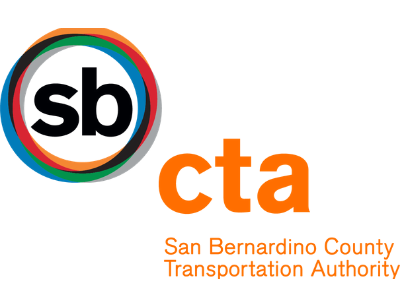Formal Study Will Explore the Best Options for Transit Access to Ontario Airport
February 14, 2020

SBCTA’s Transit Committee on Wednesday recommended that the voter-entrusted agency responsible for transportation planning in San Bernardino County conduct a formal, comprehensive study of transit alternatives to and from Ontario International Airport.
The $3 million study would aim to identify the most effective and efficient options for enhancing transit access to America’s fastest-growing airport. Those options include the building of a connector from Metrolink’s Rancho Cucamonga station using zero-emission passenger trains, the use of existing freight lines adjacent to the airport property or an extension of the Gold Line from Los Angeles County. Public-private partnerships with emerging technology companies would also be explored as possible fits.
The study would include research and public outreach and would be managed by SBCTA (the San Bernardino County Transportation Authority), which is mandated by law to handle and oversee cooperative regional planning and further an efficient multimodal transportation
system countywide. The full SBCTA board will consider the request next month.
“Improving transit access to Ontario International Airport is a critical priority for ONT and our region, and we’re thrilled to see that SBCTA is continuing to move this process forward,” said Alan D. Wapner, President of the Ontario International Airport Authority Board of
Commissioners and an SBCTA Board Member. “We owe it to our residents, businesses and taxpayers to explore all options and ultimately make the most informed decision on what works best.”
Since its return to local control in 2016, ONT has seen its passenger volumes jump from 4 million per year to 5.6 million in 2019, and was recently designated the fastest-growing airport in the U.S. for the second year in a row. The Inland Empire-based airport is located in one of
the fastest-growing population centers in the country. The Southern California Association of Governments projects that the IE will grow by 35% in the next 25 years, compared to 19% for Southern California as a whole.
In 2018, SBCTA and ONT partnered to create the Ontario Airport Roundtable, a network of major local stakeholders to discuss transit access and other issues that would benefit the airport and the region. Statistics show that nearly 70% of domestic passengers using Ontario
Airport live in the Inland Empire.
Earlier this week, SBCTA’s General Policy Committee voted to recommend that the agency’s Board of Directors oppose a bill by Assemblymember Chris Holden to establish the West San Bernardino County Rail Construction Authority, whose sole purpose would be to build a six-mile extension of the Gold Line from the Los Angeles County line to ONT. As presented, the proposed legislation raises more concerns than it addresses. For example, Holden’s plan does not directly address how an extension of the Gold Line to Ontario Airport would be funded, though typically, the cost for such a project is borne by local taxpayers – in this case, the taxpayers of San Bernardino County once the project crosses the LA County Line. In addition, the logical follow-up to that inquiry would be who would benefit from such an
investment.
“We appreciate the Assembly Member’s desire to bring the Gold Line to San Bernardino County, and would welcome connectivity from LA County as part of a comprehensive package of enhanced transit opportunities not just to and from Ontario Airport but our county as a whole. However, we continue to emphasize that the establishment of another agency to develop and deliver the appropriate transit enhancements in our county is duplicative and unnecessary. Rather, it would be more prudent to coordinate with the existing transportation
authority that has a long history of meeting its obligation to its residents and businesses,” said Darcy McNaboe, SBCTA’s President.
“San Bernardino and the Inland Empire are fast becoming the population and employment hubs for Southern California. That’s great news, but requires an even more thoughtful and balanced approach to transportation planning. Creating a whole new agency with a single-minded focus doesn’t lend itself to the kind of shared visioning and broad collaboration we need to address our challenges,” said Paul Granillo, CEO of the Inland Empire Economic Partnership and an Ontario Airport Roundtable member. “The fact is, there is a limited amount of money available for transportation, and we need to work together – not in competition with one another – to address the growing needs we’ve got throughout our county.”
